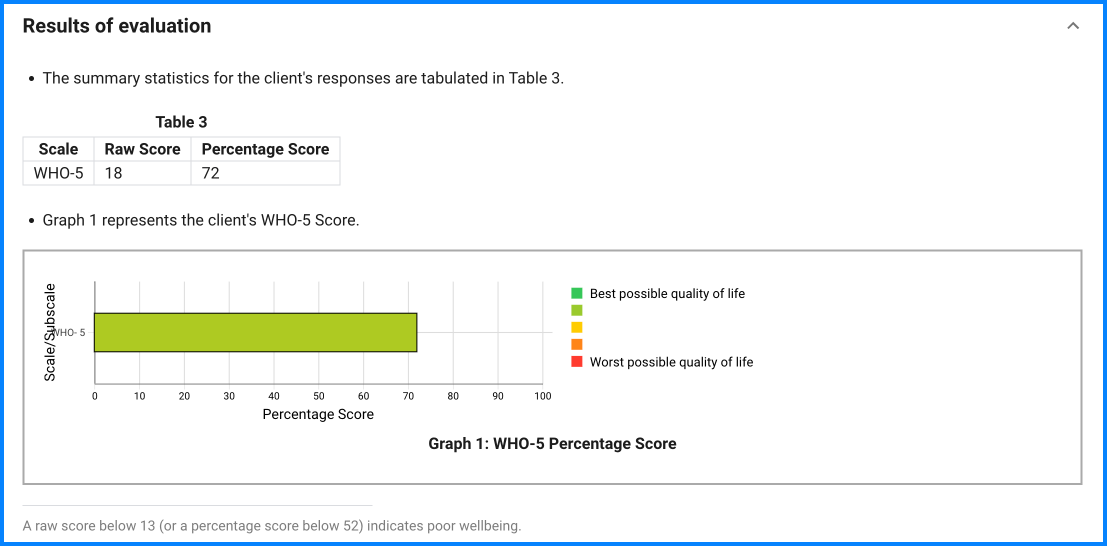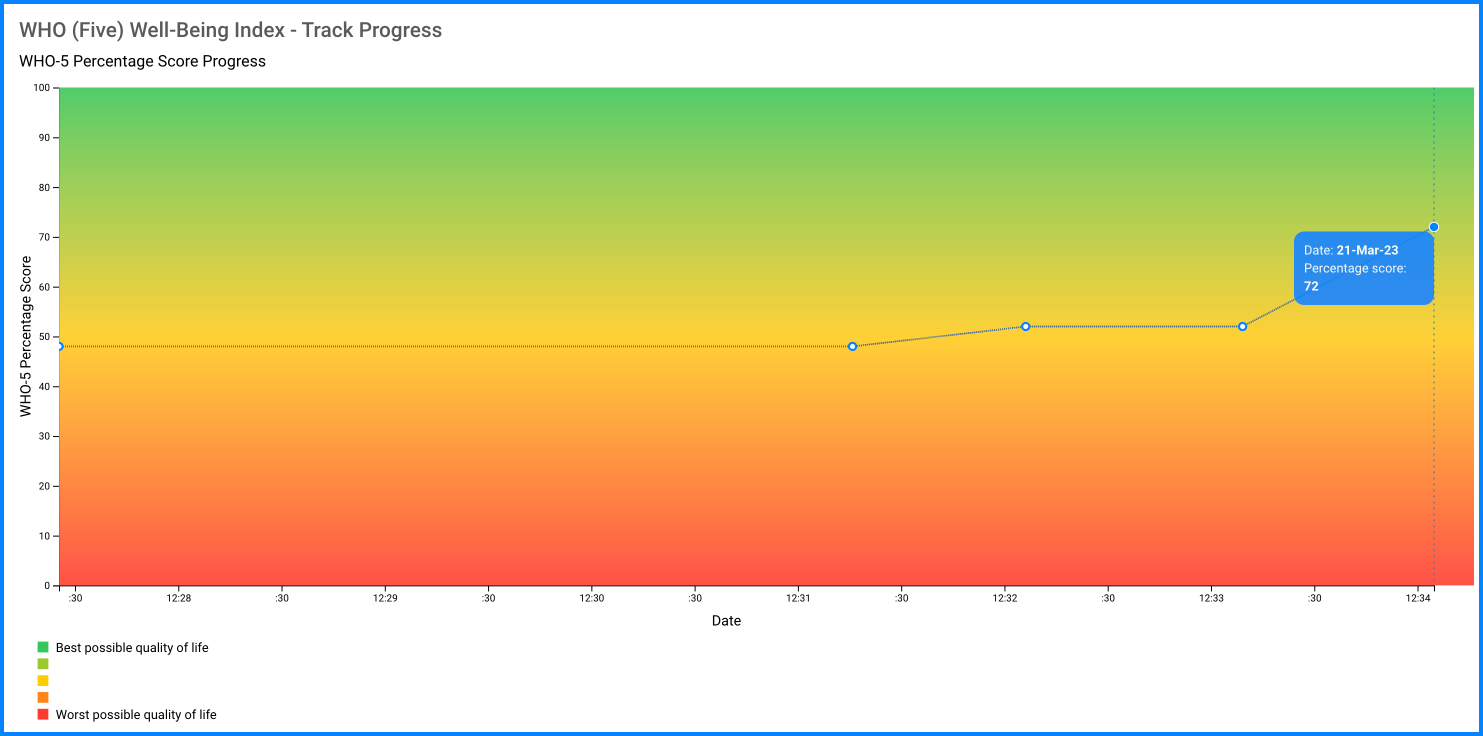The WHO-5 consists of five statements, which respondents rate according to the scale below (in relation to the past two weeks).
The 5-item World Health Organization Well-Being Index (WHO-5) is a short and generic global rating scale measuring subjective well-being. It is among the most widely used questionnaires assessing subjective psychological well-being. Since its first publication in 1998, the WHO-5 has been translated into more than 30 languages and has been used in research studies all over the world.




